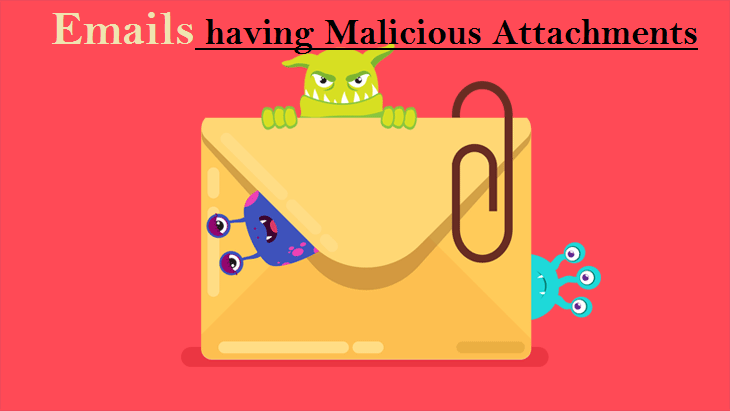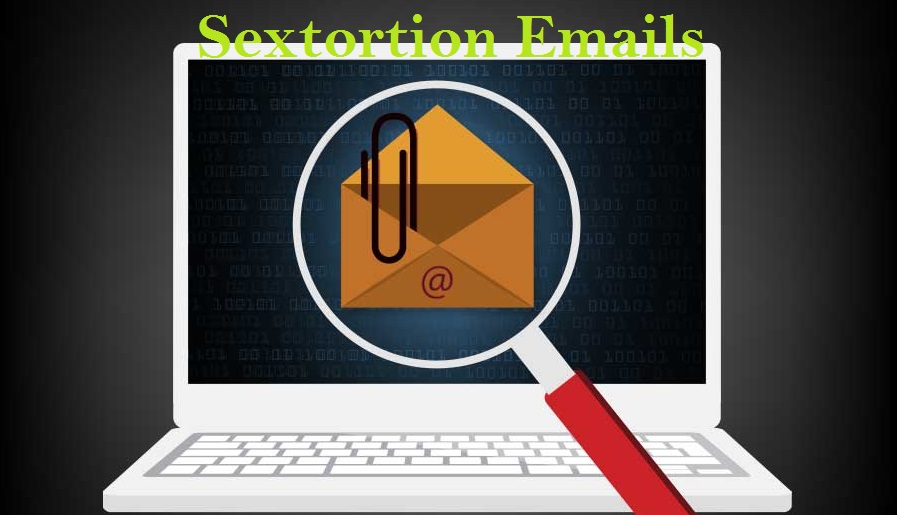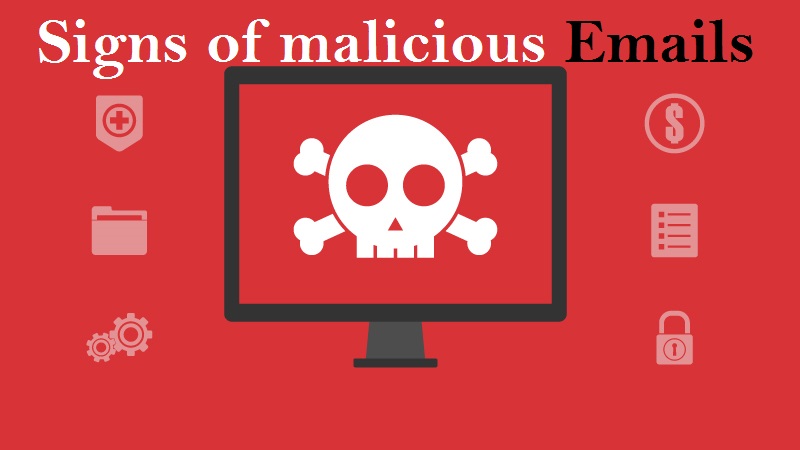Don’t Fall Prey to the Hallo Perversling Email Scam
Hallo Perversling Email Scam Outline
Hallo Perversling Email is a dubious email. This deceptive email is the German version of the well-known ‘Hello pervert‘ email scam.
It’s pertinent to mention that this email was started circulating about a month ago. The scammers behind this email have translated this email. The purpose was to target the German-speaking people.
Hallo Perversling Email operates as a sextortion scam. This letter informs the recipient that they have collected some personal information of the victim. The scammers demands payment to keep the information private. They demand the payment in Bitcoin because its transaction nature is irreversible.
The sender of these email claims that the recipient device was hacked and they were able to track the recipient’s browsing activities. This fake letter informs the recipients that they have recorded some compromising videos and images of the recipient.
The scammers behind this scam use the scare tactics to fulfill their malicious plans. They threaten the recipients if they deny to pay the ransom, they will release their personal data in public domain.
Its noteworthy to mention that all the claims made by this email is absolutely fake your device was never hacked and the scammers don’t have any of your compromising videos. So if you receive such kind of emails kindly ignore it. Keep in mind, the only purpose of this email is to steal your cryptocurrency funds.
A typical “Hallo Perversling” scam email reads as follows:
Hallo Perversling,
Ich möchte dich über eine sehr schlechte Situation für dich informieren.
Du kannst jedoch davon profitieren, falls du klug handelst.
Hast du schon von Pegasus gehört?
Dabei handelt es sich um ein Spyware-Programm, das sich auf Computern und Smartphones installiert und es Hackern ermöglicht,
die Aktivitäten der Gerätebesitzer zu überwachen.
Es ermöglicht den Zugriff auf deine Webcam, Messenger, E-Mails, Anrufaufzeichnungen usw.
Es funktioniert gut auf Android, iOS und Windows. Ich vermute, du hast bereits herausgefunden, worauf ich hinaus will.
Es ist schon ein paar Monate her, dass ich es auf all deinen Geräten installiert habe, weil du beim Anklicken von Links im Internet nicht sehr wählerisch warst.
In dieser Zeit habe ich alle Aspekte Ihres Privatlebens kennengelernt, aber einer ist für mich von besonderer Bedeutung.
Ich habe viele Videos von dir aufgenommen, in denen du dir zu höchst umstrittenen Pornovideos einen runterholst.
Da das “fragwürdige” Genre fast immer das gleiche ist, kann ich daraus schließen, dass du eine kranke Perversion hast.
Ich bezweifle, dass du willst, dass deine Freunde, Familie und Kollegen davon erfahren. Aber ich kann mit ein paar Klicks dafür sorgen.
Jede Nummer in deinem Kontaktbuch wird plötzlich diese Videos erhalten – auf WhatsApp, auf Telegram, auf Skype, auf E-Mail – überall.
Es wird ein Tsunami sein, der alles mit sich reißt, was sich ihm in den Weg stellt, und vor allem dein früheres Leben.
Betrachte dich nicht als unschuldiges Opfer. Niemand weiß, wohin deine Perversion in Zukunft führen könnte.
Betrachte dies also als eine Art verdiente Strafe, um dich aufzuhalten. Besser spät als nie.
Ich bin eine Art Gott, der alles sieht. Aber keine Panik. Wie wir wissen, ist Gott barmherzig und vergebend, und ich auch.
Aber meine Barmherzigkeit ist nicht kostenlos.
Überweise 1490 EUR auf meine Bitcoin-Brieftasche:13H5YgNiXbobfvctiK7sjhWKAGu1D9W1dZ
Sobald ich die Bestätigung der Transaktion erhalte, werde ich alle Videos, die dich kompromittieren, dauerhaft löschen,
Pegasus von all deinen Geräten deinstallieren und aus deinem Leben verschwinden.
Du kannst sicher sein – mein Nutzen ist nur Geld.
Sonst würde ich dir nicht schreiben, sondern dein Leben ohne ein Wort in einer Sekunde zerstören.
Ich werde benachrichtigt, wenn du meine E-Mail öffnest, und von diesem Moment an hast du genau 48 Stunden Zeit, um das Geld zu überweisen.
Wenn Kryptowährungen für dich Neuland sind, mache dir keine Sorgen, es ist ganz einfach. Googele einfach “Krypto-Börse” und dann wird es nicht schwieriger sein,
als ein paar nutzlose Dinge bei Amazon zu kaufen.
Ich warne dich dringend vor dem Folgenden:
) Bitte antworte nicht auf diese E-Mail. Ich habe sie über eine temporäre E-Mail gesendet, so dass ich nicht auffindbar bin.
) Wende dich nicht an die Polizei. Ich habe Zugang zu all deinen Geräten, und sobald ich herausfinde, dass du zur Polizei gelaufen bist, werden Videos veröffentlicht.
) Versuche nicht, deine Geräte zurückzusetzen oder zu zerstören. Wie ich bereits erwähnt habe: Ich überwache alle deine Aktivitäten,
also stimme entweder meinen Bedingungen zu oder die Videos werden veröffentlicht.
Vergesse auch nicht, dass Kryptowährungen anonym sind. Es ist also unmöglich, mich anhand der angegebenen Adresse zu identifizieren.
Viel Glück, mein perverser Freund. Ich hoffe, dies ist das letzte Mal, dass wir voneinander hören.
Und ein freundlicher Rat: Sei von nun an nicht mehr so sorglos mit deiner Online-Sicherheit.
In terms of email-based cyber threats, what are the different types of malicious emails?
Emails having Malicious Attachments

Email spam containing malicious attachments is a commonly employed method by cybercriminals to compromise users’ computers with malware. Malicious attachments often harbor trojans that possess the ability to pilfer sensitive data such as banking details, passwords, and other confidential information.
The primary objective of cybercriminals in these attacks is to deceive their potential victims into accessing a compromised email attachment. They commonly employ email messages that discuss recently obtained invoices, faxes, or voice messages to accomplish this aim.
If an unsuspecting individual succumbs to the trap and opens the attachment, their computer becomes infected, allowing cybercriminals to gather a substantial amount of confidential data.
Although it is a more intricate technique to pilfer personal data (as spam filters and antivirus programs typically identify such endeavors), if cybercriminals achieve success, they can access a broader spectrum of information and continue accumulating data over an extended duration.
Phishing Emails

Typically, cybercriminals employ deceitful emails to deceive individuals on the internet into divulging their confidential personal information, such as login credentials for diverse online platforms, email accounts, or online banking details.
These types of attacks are commonly known as phishing. In a phishing attack, cybercriminals typically send an email that mimics the branding of popular services like Microsoft, Amazon, DHL, or Netflix. They craft messages with a sense of urgency, such as incorrect shipping details or expired passwords, and include a hyperlink, hoping to entice unsuspecting recipients into clicking on it.
Upon clicking the provided link in these email messages, victims are redirected to a counterfeit website that closely resembles the legitimate one. In this deceptive environment, victims are prompted to enter their password, credit card information, or other sensitive data, which is subsequently harvested by cybercriminals for malicious purposes.
Spam Emails

Spam emails are unsolicited, bulk messages sent to a large number of recipients simultaneously. They often contain unwanted advertisements, scams, or fraudulent offers. The primary purpose of spam emails is to promote products, services, or websites, sometimes of dubious nature.
These emails can be sent by individuals or automated bots, and they often target a wide range of recipients without their consent. Spam emails can clog up inboxes, consume storage space, and pose risks such as phishing attempts or malware distribution.
Sextortion Emails

This type of email is a form of phishing known as a “sextortion scam.” It preys on individuals’ fears and attempts to blackmail them into paying a ransom. The scam email falsely claims that a cybercriminal has gained unauthorized access to the victim’s webcam and possesses a compromising video recording of them engaging in explicit activities.
The scammers leverage the potential embarrassment and shame associated with such content to coerce the victim into paying a ransom, often in the form of cryptocurrency, to prevent the release of the alleged video. However, it is crucial to understand that these claims are entirely false and fabricated.
What are some indicators or signs that can help identify a malicious email?

To spot a malicious email you can look for the following indicators:
Suspicious Sender: Check the sender’s email address and verify if it matches the official contact information of the organization or person they claim to represent. Be cautious of email addresses that contain misspellings, random numbers, or unfamiliar domain names.
- Poorly Written Content: Pay attention to grammar and spelling mistakes, unusual language, or poor formatting. Legitimate organizations usually maintain professional communication standards.
- Urgent or Threatening Language: Beware of emails that create a sense of urgency, pressure you to take immediate action, or threaten negative consequences if you don’t comply. Scammers often use fear or time-sensitive situations to manipulate victims.
- Suspicious Attachments or Links: Be careful of email attachments or links, especially from unknown or unexpected sources. Don’t open attachments or click on links unless you are confident about their legitimacy. Hover over links to see the actual URL before clicking.
- Requests for Personal Information: Legitimate organizations typically don’t request sensitive information, such as passwords, Social Security numbers, or credit card details, via email. Avoid providing personal data unless you are certain of the email’s authenticity.
- Unusual Requests or Offers: Be wary of emails offering unexpected rewards, prizes, or financial opportunities. If something seems too good to be true or doesn’t align with your normal interactions, it could be a sign of a scam.
- Suspicious Email Design: Poorly designed or visually inconsistent emails may indicate a scam. Watch for generic greetings, mismatched logos, or distorted images.
If you have doubts about an email’s legitimacy, it’s best to err on the side of caution. Avoid clicking on links or downloading attachments, and consider contacting the sender through a verified channel to verify the email’s authenticity.
What actions can be taken if you have fallen for an email scam?

Below are the steps you should take if you’ve fallen prey to the Hallo Perversling Email Scam.
- If you have mistakenly provided your credit card information after clicking on a link in a phishing email, it is crucial to immediately contact your bank and inform them about the situation. It is highly likely that you will need to take steps to cancel the compromised credit card and request a replacement for enhanced security.
- If you have inadvertently provided your password after falling for an email scam, it is essential to promptly change your password. Typically, cybercriminals gather stolen login details and sell them to other malicious groups for potential exploitation. By changing your password immediately, you reduce the likelihood of criminals having sufficient time to cause harm or unauthorized access to your accounts and information.
- If you notice any indications of identity theft, it is important to promptly reach out to the Federal Trade Commission (FTC). The FTC will gather information about your situation and develop a personalized recovery strategy.
- Assist in safeguarding fellow internet users by reporting phishing emails to organizations such as the National Fraud Information Center, Anti-Phishing Working Group, FBI’s Internet Crime Complaint Center, and the U.S. Department of Justice.
- If you have inadvertently opened a malicious attachment, it is likely that your computer has been compromised. To address this, it is advised to conduct a thorough scan of your system using a reliable antivirus software. We suggest utilizing SpyHunter 5 for Windows to help mitigate any potential threats.
⇓⇓Download Spyhunter 5 Free Scanner⇓⇓
Do make sure to read SpyHunter’s EULA and Privacy Policy. Spyhunter free scanner downloaded just scans and detect present threats from computers and can remove them as well once, however it requires you to wait for next 48 hours. If you intend to remove detected threats instantly, then you will have to buy its licenses version that will activate the software fully.
Frequently Asked Questions
Why was I included in the distribution of this email?
Phishing emails are often disseminated by threat actors through extensive campaigns, leading to thousands of recipients receiving comparable messages.
If I have viewed a spam email but refrained from opening the attachment, is there a possibility that my computer has been infected with malware?
Simply opening or reading an email does not pose a direct risk of malware infection. The actual threat arises when you interact with malicious attachments or links contained within the email, triggering potential malware download or installation processes.
If I downloaded and opened a file from a spam email, does that mean my computer is infected?
If the file you opened from a spam email was an executable file (.exe, .run, etc.), there is a high chance that your computer may be infected. However, if the file was a document format (.doc, .xls, .one, .pdf, etc.), the risk of infection may be lower as these formats usually require additional actions to initiate the download or installation of malware, such as enabling macros or clicking on embedded content.
If I have unknowingly shared my personal information in response to a deceptive spam email, what steps should I take to mitigate the potential risks?
If you have mistakenly shared your login credentials, it is crucial to change the passwords for all affected accounts promptly. Additionally, if sensitive personal information like identification documents or credit card details were disclosed, it is important to promptly notify the relevant authorities or organizations responsible for handling such incidents.
Is SpyHunter 5 capable of detecting and eliminating malware infections that may be present in email attachments?
SpyHunter 5 is powerful security software that is specifically designed to scan devices and effectively remove various types of malware infections. With its comprehensive scanning capabilities, it can detect and eliminate most known malware threats, including those that may be present in email attachments and pop-up notifications. Running a thorough system scan is crucial to ensure that all potential threats are identified and removed from your device.




